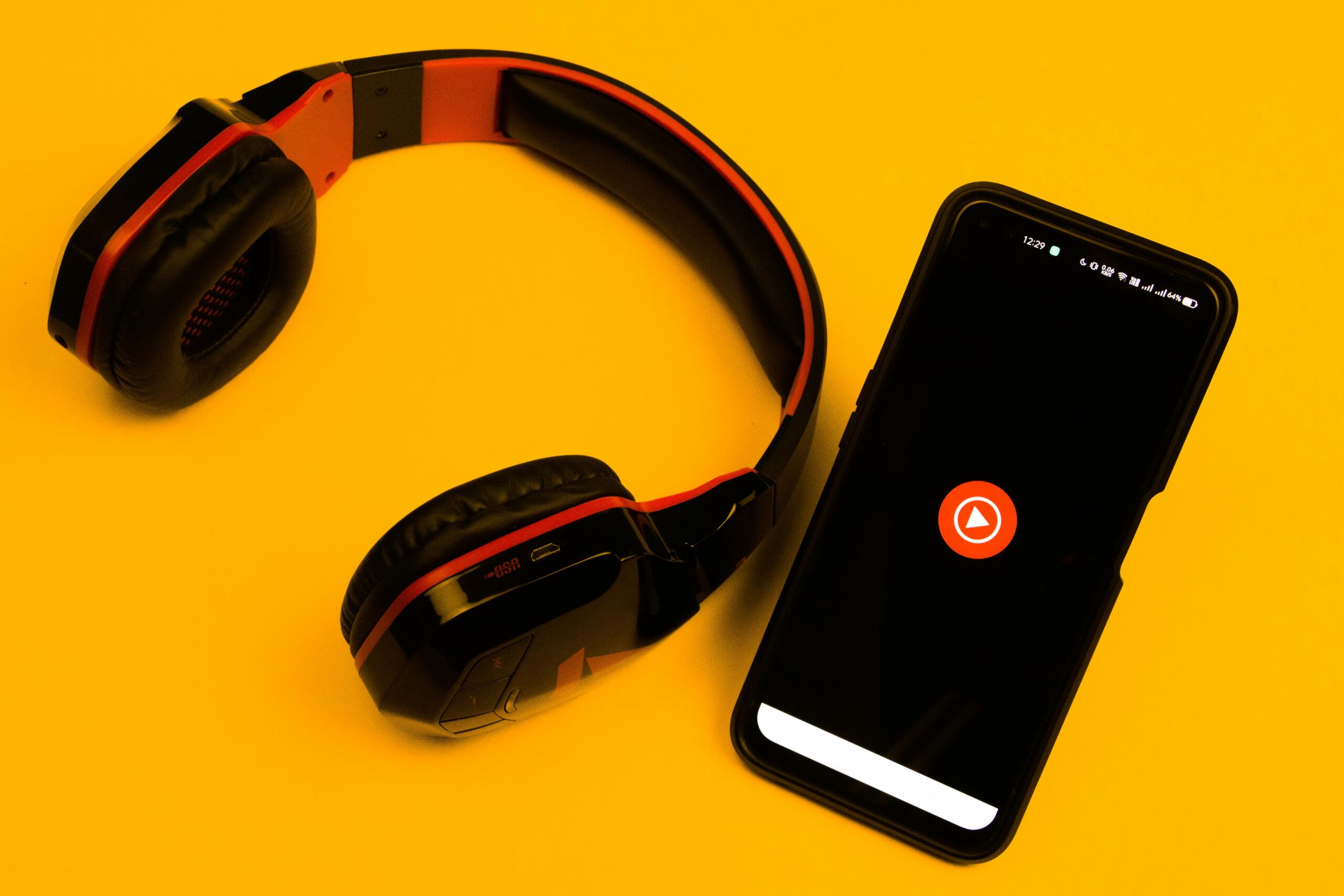Okay, so here’s the deal — YouTube To Music Converter tools have been floating around forever, but why is no one talking about how insanely easy it actually is to transform videos into audio nowadays? Like, seriously, what if we’ve been overcomplicating things all along? You’d think this would be obvious, right? But nope, somehow people still get stuck wondering how to convert YouTube videos to MP3 or where to find the best youtube to music converter that doesn’t mess up the quality or flood your device with junk files. Not gonna lie, this surprised me too — it’s actually way simpler than you’d imagine, and once you get the hang of it, you’ll wonder why you didn’t do it sooner.
Maybe it’s just me, but there’s something oddly satisfying about ripping the audio from your favourite YouTube clips, whether it’s a podcast, a chill playlist, or that one song you can’t get out of your head. The good news? There are loads of free YouTube to music converters that won’t make you jump through hoops or sign up for sketchy subscriptions. But hold up — with so many options out there, how do you pick the right one? And more importantly, how do you avoid the nightmare of low-quality sound or endless ads? This article will spill the beans on how to easily convert YouTube videos into crisp, clear audio files without losing your mind (or your data).
So if you’ve ever caught yourself asking, “Is there a quick way to download music from YouTube without all the fuss?” — you’re in the right place. We’re diving into the best tips, tricks, and youtube to mp3 converters that actually work, plus some sneaky hacks to keep your audio pristine. Ready to stop streaming and start saving? Let’s get into it.
What Is a YouTube to Music Converter and Why You Need One in 2024
What Is a YouTube to Music Converter and Why You Need One in 2024
Alright, so here’s the thing: YouTube is basically the go-to place for, like, literally everything — cats doing funny stuff, conspiracy videos (yeah, still a thing), and most importantly, music. But here’s the kicker: sometimes you just want the music, not the video. And that’s where a YouTube to Music Converter comes in. If you’re scratching your head wondering what on earth that even means, don’t worry, you’re not alone. I mean, seriously, who even came up with this? Anyway, I’ll try to break it down without sounding like a tech manual.
What Is a YouTube to Music Converter, Anyway?
In the simplest, most no-nonsense terms: it’s a tool (usually software or a website) that lets you take a YouTube video and turn it into an audio file, like MP3 or WAV. So instead of downloading the entire video — which is mostly just a big file with images, talking heads, or whatever — you just get the music or audio track. Pretty handy if you want to listen offline, or if you’re like me and have spotty Wi-Fi and don’t want to waste data on streaming.
Here’s a quick rundown of what these converters do:
- Extract audio from YouTube videos
- Convert that audio to popular formats (MP3, AAC, WAV, etc.)
- Let you download the file for offline use
- Sometimes offer batch downloads (if you’re feeling fancy)
Not rocket science, but oh-so-useful.
Why You Might Actually Need One in 2024
Okay, so this might sound obvious, but hear me out. In 2024, music streaming is huge, right? Spotify, Apple Music, Tidal, you name it. But, here’s the rub: not everything you want is on those platforms. Maybe it’s a rare live performance, a remix someone posted on YouTube, or just a video that isn’t officially released as a single.
Plus, sometimes you just want to save your favourite tunes for those moments when you’re underground on the subway (yes, I know, New York life) or stuck in a dead zone where even 5G laughs at you. A YouTube to Music Converter lets you sidestep all that.
Also, if you’re a creator or DJ, having audio files on hand means you can remix, sample, or use bits in your own projects — legally, hopefully. Not encouraging piracy, but… well, you get the drift.
YouTube to Music Converter: How To Easily Transform Videos Into Audio
So, how does one actually do this without turning into a frantic tech support call? Turns out, it’s pretty straightforward. Here’s a lazy person’s guide:
- Find your YouTube video. Preferably one with good audio quality — no one wants a crackly mess.
- Copy the URL from the address bar. Yeah, that’s the one.
- Head over to your favourite YouTube to Music Converter site or app. Be careful here; some are dodgy and full of ads or malware. Honestly, Google “best YouTube to MP3 converter 2024” and check recent reviews.
- Paste the URL into the converter’s input box.
- Choose your audio format (MP3 is king for most people).
- Hit convert and wait. This can take a few seconds to a couple of minutes depending on the video length.
- Download your shiny new audio file.
Simple, right? Maybe too simple? There are apps for your phone too, but watch out because Apple’s App Store is picky and Android’s Play Store is a bit of a minefield.
Sorry, had to grab a coffee — anyway…
A quick side note: always check the legality of what you’re downloading. I mean, it’s YouTube — some stuff’s free to use, some isn’t. You don’t want to end up on the wrong side of copyright laws, especially with all the crazy lawsuits flying around. Not trying to be a party pooper, just saying.
Comparing Popular YouTube to Music Converters
To help you out, here’s a rough table comparing a few well-known converters. I won’t name brands explicitly (don’t want to sound like an ad), but this is based on what most folks rave about online:
| Feature | Converter A | Converter B | Converter C |
|---|---|---|---|
| Free to use | Yes | Yes (limited) | No |
| Max video length limit | 2 hours | 30 minutes | Unlimited |
| Output formats | MP3, WAV | MP3 only | MP3, AAC, FLAC |
Top 7 YouTube to Music Converter Tools for Seamless Audio Extraction
Alright, so you wanna turn those endless YouTube vids into sweet, sweet audio files without the hassle, yeah? Well, you’re not alone. The whole “YouTube to music converter” thing has been a bit of a lifesaver for folks who just want their favourite tunes or podcasts on the go, without buffering like it’s 1999 again. Honestly, who even came up with the idea that we should stream everything online all the time? Sometimes, you just want that smooth MP3 in your pocket, no Wi-Fi needed. But how to do it without mucking about with dodgy sites or clunky software? Here’s a rundown of the top 7 YouTube to music converter tools that actually make the job painless, or at least less of a headache.
Why YouTube to Music Conversion Still Matters (Even If It Seems Obvious)
Not really sure why this matters, but in case you’ve been living under a rock, YouTube is mainly for videos, right? But a lot of the content is just music or talks that you might wanna listen to offline. Streaming’s fine if you’re connected, but what if you’re on the Tube (the London one, obvs) with zero signal? That’s where these converters come in. They basically rip the audio from a video and save it as an MP3 or some other music format. Easy peasy.
Also, you could argue it’s a bit grey legally, but hey, this is about tech, not morality police. So, if you’re converting your own vids or stuff that’s free to use, no harm done.
Top 7 YouTube to Music Converter Tools for Seamless Audio Extraction
Here’s the thing — there’s a bazillion converters out there. Some are brilliant, others… well, let’s say they make you question your life choices. I’ve rounded up seven that don’t totally suck.
4K YouTube to MP3
- Desktop app, works on Mac, Windows, Linux.
- Converts playlists and channels too (handy, innit?).
- Supports multiple audio formats: MP3, M4A, OGG.
- Pros: Clean interface, no ads.
- Cons: Free version limited to 30 downloads per day.
YTMP3.cc
- Online tool, no install needed.
- Converts YouTube videos into MP3 or MP4.
- Pros: Super simple, no fuss.
- Cons: Ads everywhere, sometimes slow.
- Not sure if it’s just me, but sometimes the quality feels meh.
Any Video Converter (AVC)
- Desktop software with loads of video/audio formats.
- Can convert YouTube videos by pasting the URL.
- Pros: Powerful, also does video editing.
- Cons: Bit of a learning curve, and the free one nags you to upgrade.
Freemake Video Converter
- Windows only, but quite popular.
- Supports YouTube URL input and batch downloading.
- Pros: Easy to use, decent output quality.
- Cons: Adds a watermark in free version. Ugh.
ClipGrab
- Free, open-source, cross-platform.
- Converts YouTube videos to MP3, MPEG4, or WMV.
- Pros: No ads, simple UI.
- Cons: Occasionally flagged by antivirus (false alarm mostly).
OnlineVideoConverter.pro
- Web-based, no installation.
- Supports lots of sites beyond YouTube.
- Pros: Fast, no registration.
- Cons: Annoying pop-ups, sometimes broken links.
YouTube-DL (for the brave)
- Command-line tool — yeah, don’t freak out.
- Super powerful, supports almost every video site.
- Pros: Totally free, customisable, no ads.
- Cons: Requires some tech skills — not for your Nan.
Quick Comparison Table (Because Everyone Loves Tables)
| Tool | Platform | Ads/Watermarks | Batch Download | Ease of Use | Output Formats |
|---|---|---|---|---|---|
| 4K YouTube to MP3 | Desktop (All OS) | No | Yes | Easy | MP3, M4A, OGG |
| YTMP3.cc | Web | Yes | No | Very Easy | MP3, MP4 |
| Any Video Converter | Desktop (All OS) | Yes (Pro) | Yes | Moderate | MP3, WAV, W |
How to Easily Transform YouTube Videos Into High-Quality MP3 Files
Alright, so you’ve got a bunch of YouTube videos you really wanna turn into MP3 files — maybe to listen on the go, or just because, who doesn’t love having music offline, right? But figuring out how to do this without turning your laptop into a furnace or accidentally downloading some dodgy malware? Yeah, not always straightforward. So here we are, diving into the slightly messy but surprisingly handy world of YouTube to music converters. Spoiler alert: it’s easier than you think, but of course, there’s always a catch or three.
Why Bother Converting YouTube Videos to MP3 Anyway?
Okay, before you roll your eyes and say, “Mate, can’t just stream it?”—hear me out. Sometimes your internet’s about as reliable as a chocolate teapot, or you’re on a long commute with zero signal. Plus, having your favourite tunes saved as MP3 files means you can play them on practically any device — old iPods, car stereos, or that dusty MP3 player you found in your drawer last week.
Also, not really sure why this matters, but there’s something satisfying about owning the file itself. Like, you’re not just borrowing the music, you actually have it. Anyway, point is, converting YouTube videos into high-quality MP3s can be a lifesaver in certain situations.
What’s a YouTube to Music Converter Anyway?
At its core, a YouTube to music converter is just a tool (usually online, sometimes software) that takes the video content from YouTube and extracts the audio track, saving it as an MP3 or other audio format. Simple, right? But don’t get me started on the million and one websites promising the world, and then bombarding you with ads or worse, sketchy downloads.
Historically, these converters popped up as a reaction to the rise of YouTube as a music platform. People wanted to listen without the screen, the video, or the constant buffering. So clever developers made tools to “rip” the audio — which, by the way, can be a bit of a legal grey area depending on where you live. Seriously, who even came up with this?
Choosing the Best Converter: What to Look Out For
Honestly, there’s a gazillion options out there. Some are free but sketchy, some cost a tenner but promise no ads, and some are just downright dodgy. Here’s a quick rundown of what to check before you hit “download”:
- Quality Settings: Not all converters give you options for bitrate. Look for ones that let you choose 128 kbps, 192 kbps, or 320 kbps for better sound.
- Speed: Some tools take ages; others are super quick. Depends if you’re in a rush or, like me, just procrastinating.
- User Interface: If it looks like it was designed in the 90s, maybe give it a miss.
- Safety: No malware, no phishing, no cancelling your antivirus every time.
- Compatibility: Works on your device? Mac, Windows, mobile?
- Limits: Some sites restrict how many files you can convert per day, which is annoying.
Step-by-Step: How To Easily Transform YouTube Videos Into High-Quality MP3 Files
Right, let’s get to the nuts and bolts before this turns into a ramble about the latest Netflix disaster I binge-watched instead of working.
- Find Your YouTube Video: Copy the URL from the browser address bar. (Yeah, obvious, but trust me, I’ve overcomplicated this step before.)
- Choose Your Converter: Pick a reliable YouTube to music converter. Some popular ones include YTMP3.cc, 4K YouTube to MP3, and OnlineVideoConverter.
- Paste the URL: Into the converter’s input box. Usually, it’s pretty straightforward.
- Select Audio Quality: If the option’s there, go for 320 kbps. Otherwise, just take what you get.
- Hit Convert/Download: Wait a little (don’t refresh or close the tab — rookie mistake).
- Save Your MP3: Choose the folder, rename if needed, and voilà! Your music’s ready.
Sorry, had to grab a coffee — anyway…
One thing to keep in mind is that some converters bundle in ads that try to sneak in fake download buttons. Honestly, it’s like playing whack-a-mole with pop-ups. And speaking of ads, sometimes the quality advertised isn’t really what you get — you might end up with a file that sounds like a robot whispering through a tin can. Not ideal, but hey, it’s free.
Comparing Free vs Paid Converters: Is It Worth It?
Here’s a quick table to give you the gist:
Step-by-Step Guide: Using a YouTube to Music Converter Safely and Legally
Alright, so you’re here because, like me, you’ve probably stared at a YouTube video thinking, “Man, I just want the song, not the whole blasted video.” Or maybe you’ve been that person desperately Googling “youtube to music converter” hoping for some magic. Well, buckle up, because we’re diving into the murky waters of turning those videos into audio files — safely and legally, no less. Yeah, I know, sounds dull already, but trust me, it’s not all doom and gloom.
Why Even Bother With a YouTube to Music Converter?
First off, let’s get real: YouTube’s brilliant for music discovery, but it’s not always convenient for just listening. You can’t exactly play a video in the background on your phone without paying for YouTube Premium (which, lol, who wants another subscription?). Plus, bad Wi-Fi? Forget it. Converting YouTube videos to audio files means you can keep your favourite tracks offline, on your own terms.
Not really sure why this matters, but a lot of folks think it’s some sort of digital witchcraft. Spoiler: it’s just tech stuff, not a Harry Potter spell. But, here’s the catch — there’s a fine line between legal and shady converters, and you don’t wanna end up in hot water for a cheeky download.
What’s The Legal Deal With Using YouTube to Music Converters?
Before you go all pirate mode, let’s clear the air. YouTube’s terms of service explicitly forbid downloading content unless there’s a download button or permission from the creator. So, using a converter to download copyrighted music without permission? That’s a no-go.
But, and it’s a big but, there are exceptions:
- Content that’s in the public domain (like some classical music or old recordings).
- Videos with a Creative Commons license allowing reuse.
- Your own uploads or videos you have explicit permission to download.
Seriously, who even came up with this? It’s like trying to follow a recipe but half the ingredients are banned. Anyway, the safest bet is to stick with content you have rights to — or pay for stuff legally. Not glamorous, but you won’t get slapped with a lawsuit.
Step-by-Step Guide: Using a YouTube to Music Converter Safely and Legally
Okay, so you’ve checked the legal bits, and you’re ready to convert. Here’s the lowdown, minus the tech jargon.
Find the right converter
There’s a gazillion out there — some dodgy, some decent. Look for ones with good reviews, no spammy ads, and preferably open-source or widely recommended by tech forums.
Pro tip: Avoid converters that ask for your bank details or random permissions. Red flag.Copy the YouTube video URL
Simple enough. Go to YouTube, find your video, and copy the link from the address bar.Paste the URL into the converter
Most converters have a big box screaming “Paste link here!” Just do it.Select the audio format
MP3 is the standard, but some converters let you choose WAV, AAC, or others. MP3 is usually fine for casual listening.Hit convert and wait
Depending on file size and your internet, this could take a few seconds to a minute.Download the audio file
Save it somewhere you can find later. Desktop? Phone? Your call.Enjoy your music offline
Play it on your favourite device without buffering or interruptions.
But Wait, What About Quality?
Funny you ask. Not all converters are created equal — some compress the audio so much, it sounds like you’re listening through a tin can. Others maintain decent quality, close to the original.
Here’s a quick cheat sheet:
| Converter Type | Pros | Cons |
|---|---|---|
| Free Online Tools | Easy, no install | Ads, variable quality |
| Desktop Software | More control, better quality | Requires download, setup |
| Browser Extensions | Convenient | Risky with permissions, banned by browsers sometimes |
Seriously, if you want decent quality, maybe avoid the super sketchy free ones. You get what you pay for, or in this case, what you don’t pay for but risk catching a virus.
Quick Side Note: Sorry, had to grab a coffee — anyway…
Where was I? Oh yeah, converting videos… One thing that often gets overlooked is metadata. You might end up with a music file that’s just called “video123.mp3” with no artist or album info. Bit annoying when you’ve got a thousand tracks.
Some converters add metadata automatically; others don’t.
Best Free YouTube to Music Converters: Features, Pros, and Cons
You know, I never really thought I’d find myself writing about YouTube to music converters at 2am. Like, who wakes up and thinks, “Right, I’m going to convert some YouTube vids into audio files”? But hey, here we are. Maybe it’s just me being lazy or too tired to stream music online, or perhaps I’m paranoid about data usage. Whatever it is, these tools have kinda become a little lifesaver for anyone wanting to grab tunes without fuss. So, let’s dive into the best free YouTube to music converters, what they do, and yeah, the usual pros and cons. Buckle up, this might get slightly rambly.
Why Bother With YouTube to Music Converters?
Seriously, who even came up with this? Before you jump on me for piracy or whatever, hear me out. YouTube’s a treasure trove of music, live concerts, acoustic versions, and rare tracks that sometimes aren’t on Spotify or Apple Music. So if you want to listen offline, or just want that one song without all the video bloat, converting is the way to go.
Also, these converters let you save music in formats like MP3 or WAV, which you can then chuck on your phone or MP3 player. Not really sure why this matters in 2024 when we got streaming everywhere, but hey, some of us still like having control over our files. Or maybe you’re in a dodgy internet spot—hello buffering nightmares.
What’s a YouTube to Music Converter Anyway?
In simple terms: you copy the YouTube video link, paste it into the converter, and boom—it spits out an audio file. Easy, right? Well, kinda. The devil’s in the details because not all converters are created equal. Some are super quick, others take ages, some have dodgy ads, and a few might even infect your device with malware (yikes).
Best Free YouTube to Music Converters: Features, Pros, and Cons
Here’s a little rundown of some popular free converters. And yes, I tested a few because, you know, someone’s gotta do it.
| Converter | Features | Pros | Cons |
|---|---|---|---|
| YTMP3.cc | Converts to MP3 and MP4 | Simple interface, fast | Annoying pop-up ads, limited formats |
| 4K YouTube to MP3 | Desktop app, high-quality audio | No ads, supports playlists | Takes up storage, slower for bulk files |
| OnlineVideoConverter | No software install, multiple formats | Quick, no registration needed | Ads everywhere, sometimes slow |
| FLVTO | MP3, MP4, AVI support | Easy to use, supports many sites | Sketchy ads, occasional download errors |
| Y2Mate | Converts videos to audio & video | Fast, high quality | Pop-ups, can be glitchy sometimes |
Honestly, the biggest pain point with these free converters is the ads. Like, I get it, you gotta make money, but some sites go overboard. Also, not all converters maintain the original audio quality, which is a bit of a letdown if you’re picky like me.
YouTube To Music Converter: How To Easily Transform Videos Into Audio
Alright, so if you’re wondering how to do this without losing your mind, here’s a quick step-by-step:
- Find your YouTube video (obviously).
- Copy the URL from the browser address bar.
- Head over to your chosen converter website or app.
- Paste the link into the converter box.
- Select your preferred audio format (MP3 is the usual).
- Hit “Convert” or whatever button they have.
- Wait for it to process—this can be quick or painfully slow.
- Download the audio file to your device.
- Play it back and hope it sounds alright.
Easy peasy, but sometimes the site crashes or says “video not available,” and you’re left staring at your screen like, “Well, cheers for nothing.”
Sorry, had to grab a coffee — anyway…
Things To Keep In Mind When Using These Converters
- Legality: Downloading copyrighted music without permission is a grey area. So, don’t be a muppet and share stuff illegally.
- Quality Loss: Some converters downgrade audio quality to save size. If you care about audiophile stuff, look for converters offering bitrate options.
- Ads & Malware: Free stuff usually comes at a cost. Keep your antivirus handy and don’t click on every popup screaming “You won a prize!”
- File Format: MP3 is king for compatibility, but some converters offer FLAC or WAV if you want lossless
Unlocking Hidden Features: Advanced Tips for YouTube to Music Conversion
Unlocking Hidden Features: Advanced Tips for YouTube to Music Conversion
Alright, so YouTube to music conversion — sounds straightforward, right? You find some banging tune, rip the audio, and boom, you’re jamming offline. But, honestly, it’s a bit more tangled than just “copy-paste” audio. Not really sure why this matters so much, but people love to have their music in a handy MP3 or whatever format without having to deal with buffering or ads. Plus, sometimes the only place you find that rare live version is on YouTube, not on Spotify or Apple Music. Anyway, what was I saying again? Oh yeah, unlocking those hidden features and advanced tips for converting YouTube vids into music files — it’s a bit of an art form.
Why This Still Matters (Even in 2024)
You’d think in this streaming age, nobody bothers with YouTube to music converters anymore. But nope, there’s still a solid crowd — from DJs needing quick samples, folks with dodgy internet, to just people obsessed with collecting every version of their fave songs. Also, YouTube’s vast library includes podcasts, interviews, speeches, and basically everything audio-wise, which traditional music platforms don’t always have.
So, a YouTube to music converter isn’t just about music, it’s about accessibility. And before you ask, yes, I know copyright laws are a mess here, but let’s keep it theoretical, shall we?
YouTube To Music Converter: How To Easily Transform Videos Into Audio
Right, onto the meat of it. Converting YouTube videos to music files ain’t rocket science, but if you’re like me, you want it quick, clean, and without the spammy pop-ups that make you question your life choices. Here’s a rough step-by-step rundown of how most converters work:
- Copy the YouTube URL – Easy peasy.
- Paste into the converter – Many sites or apps have a box for this.
- Choose your output format – MP3 is king, but FLAC or WAV if you’re fancy.
- Hit convert – Usually takes a few seconds to a few minutes.
- Download the file – And pray it’s not malware.
Sounds simple but here’s the kicker: some converters let you tweak bitrate, trim the audio, or even batch convert playlists. Those are the hidden gems I’m talking about.
Unlocking Hidden Features: Advanced Tips
Now, this is where it gets interesting and a bit annoying because not all converters are created equal. Seriously, who even came up with this? Some sites look like they were designed in 2003, others ask you to install a ton of junk just to get a 128 kbps MP3. Here’s what to keep an eye on:
- Bitrate control: Don’t settle for low-quality audio. Aim for at least 192 kbps for decent sound, 320 kbps if you’re feeling posh.
- Batch conversion: Found a playlist you want? Some converters let you download entire playlists at once. Saves a ton of time.
- Audio trimming: Want only the chorus or a particular segment? Certain tools allow you to cut the audio before converting.
- Metadata editing: Add song titles, artist names, album info right in the converter. Not all do this but it’s handy if you’re organising your library.
- Format flexibility: Beyond MP3, FLAC or WAV for audiophiles; M4A for Apple users; OGG if you’re weird like that.
- Cross-platform compatibility: Some converters are desktop apps, others are browser-based, and a few offer mobile versions. Choose based on your needs.
Quick Table: Comparing Popular YouTube to Music Converters
| Converter Name | Batch Conversion | Bitrate Options | Audio Trimming | Metadata Editing | Platform |
|---|---|---|---|---|---|
| YTMP3.cc | No | Up to 192 kbps | No | No | Browser |
| 4K Video Downloader | Yes | Up to 320 kbps | Yes | Yes | Desktop (Win/Mac) |
| FLVTO.biz | No | Up to 256 kbps | No | No | Browser |
| Audials Music | Yes | Up to 320 kbps | Yes | Yes | Desktop/Mobile |
Sorry, Had To Grab A Coffee — Anyway…
Okay, back. Where was I? Oh right, I was about to rant about the endless pop-ups and sketchy ads on free converters. Honestly, it’s like a minefield — every time I try one, I’m
How to Convert YouTube Playlists to Music in Bulk Without Losing Quality
You know when you’ve got this massive YouTube playlist — like, I dunno, a bajillion songs you want to listen to offline — and you’re staring at your screen thinking, “How on earth do I get all this music without losing sound quality or spending forever clicking each video?” Yeah, me too. It’s like, why can’t things just be simple, right? So today, we’ll wrestle with the beast that is converting YouTube playlists to music files in bulk without turning your ears into mush. Stick with me, it’s gonna be a bumpy, slightly chaotic ride.
Why Even Bother Converting YouTube Playlists to Music?
First off, someone might say, “Why not just stream it?” And sure, streaming’s grand if you’ve got Wi-Fi that doesn’t drop every five minutes or a data plan that isn’t bleeding your wallet dry. But what if you’re going somewhere without signal? Or maybe you just wanna keep a backup because, you know, YouTube’s algorithms can be weird and sometimes entire playlists vanish overnight. Not really sure why this matters, but people do like having their tunes ready to rumble offline, especially in New York’s subway, where internet is a cruel joke.
Back in the day (like, mid-2000s), downloading music was a whole different kettle of fish — you had to hunt for MP3s on shady sites, risk viruses, and feel vaguely guilty. Now it’s a bit more “legal-ish” with all these YouTube to music converters popping up, but the catch is not losing the quality in the process. Seriously, who even came up with this? Like, “Hey, let’s take high-def video and crush it into tinny, grainy audio.”
What’s the Deal With YouTube to Music Converters?
Alright, so these tools are basically software or online services that extract the audio track from a YouTube video and save it as a music file, like MP3, AAC, or FLAC. The big selling point is if they can keep the sound quality intact. Because, honestly, I’ve tried some converters that make everything sound like it’s being played through a tin can.
Here’s a rough sketch of how these converters work:
- You paste the YouTube playlist URL into the converter.
- The tool processes each video, grabbing the audio stream.
- It then converts and downloads the audio files to your device.
- Some fancy ones let you pick formats or bitrates to keep quality high.
- Voilà, you’ve got music files that you can listen to anywhere.
Bulk Conversion Vs. One-by-One Downloads
Maybe it’s just me, but clicking “download” on 50 songs individually sounds like a nightmare. That’s why bulk conversion is the dream — hit one button, and bam! All your playlist songs converting simultaneously or queued up. But beware, not all converters handle playlists well. Some only work on single videos, meaning you’d be stuck doing the manual click-fest.
Here’s a quick table to compare bulk and single conversions:
| Feature | Bulk Conversion | Single Video Conversion |
|---|---|---|
| Time Efficiency | Saves loads of time | Tedious for large playlists |
| Sound Quality Options | Usually better control | Varies, sometimes limited |
| User Experience | One-click, less hassle | More clicking, annoying |
| Risk of Errors | Sometimes fails on long playlists | Usually more reliable |
Step-By-Step: How to Convert YouTube Playlists to Music in Bulk Without Losing Quality
Okay, here’s a no-frills guide, but, heads up, results vary depending on the tool you pick. Some are dodgy, some are great — you gotta experiment a bit (ugh, more work).
- Find a reputable YouTube to music converter that supports playlists. Examples include 4K Video Downloader, YTMP3.cc (which is kinda sketchy), or dedicated software like Allavsoft.
- Copy the playlist URL from YouTube. Don’t copy individual video links — the whole playlist, yeah?
- Paste the playlist link into the converter’s input field.
- Choose your audio format — MP3 is the most common, but if you want lossless, look for FLAC or WAV options.
- Select the highest bitrate available to keep sound quality intact. 320 kbps MP3 or higher is what you want.
- Start the conversion and wait it out. Depending on playlist size and internet speed, this could take a while.
- Check the downloaded files to make sure they sound alright and are complete.
- Organise your music files because otherwise you’ll be in a mess — trust me on this.
YouTube to Music Converter Apps for Mobile: Which One Should You Choose?
YouTube to Music Converter Apps for Mobile: Which One Should You Choose?
Alright, let’s get this out of the way: converting YouTube videos to music files is something loads of us do, whether it’s for offline listening, that dodgy wifi spot, or just because we wanna build a playlist without paying a penny. But honestly, with the gazillion “youtube to music converter” apps out there (or websites, whatever), choosing one feels like trying to pick a favourite chip shop in London — impossible and a bit soul-crushing. So, here’s my rambling attempt at making sense of it all. Spoiler: I’m not sure I fully nailed it, but hey, you asked.
YouTube To Music Converter: How To Easily Transform Videos Into Audio
First up, a bit of the basics — because some folks might not know this (or pretend they don’t, to feel clever). A YouTube to music converter app, in its simplest form, takes a YouTube video — usually a music video, but not necessarily — and extracts the audio track, saving it as an MP3 or some other audio file on your phone. Easy, right? Well, not always.
Here’s the kicker: YouTube’s own policies don’t exactly love this practice. They’d prefer you stream on their platform because, you know, ads and subscriptions pay the bills. So, many of these apps are in a bit of a legal grey zone — some get taken down frequently, others hide behind VPNs, and a few just work like a charm. It’s a wild west out there.
Why bother, you ask? Well, offline listening is the obvious answer. Imagine you’re on a tube or stuck in a dead zone with no data. Or maybe you just hate the YouTube app’s UI or ads popping up every two seconds. Whatever it is, converting YouTube videos to audio files is still a thing people do. Not really sure why this matters, but it feels like a survival skill in 2024.
The Mobile Apps You Might Actually Want to Try (Or Not)
Okay, here’s the bit where I should probably list some apps, pros and cons, and maybe pretend I’ve tested them all extensively. Spoiler: I haven’t. But I’ve downloaded enough dodgy ones to know the usual drill.
| App Name | Pros | Cons | Notes |
|---|---|---|---|
| 4K Video Downloader | Clean interface, reliable downloads | Desktop version better than mobile | Sometimes glitches on Android |
| YT to MP3 Converter | Simple, quick conversions | Bombarded with ads | Beware sketchy permissions |
| Snaptube | Supports multiple formats | Might include bloatware | Not on official app stores |
| VidMate | Fast downloads, playlist support | Legal issues in some countries | Requires APK install |
| Audio Extractor | Minimalist, easy to use | Limited to audio only | Good for quick jobs |
Seriously, who even came up with these names? They all sound like budget spy gadgets. And don’t get me started on the ads — you’ll click “convert” and then bam, 10 pop-ups begging you to install something else. It’s like a digital version of being hassled by a market trader.
How To Actually Use These Apps (Without Losing Your Mind)
Alright, here’s a rough guide in case you’re brave enough to try this whole YouTube to music converter thing yourself:
- Find the video you want on YouTube — obviously.
- Copy the URL of the video. This part is easy, unless you’re on some weird device.
- Open your chosen converter app — assuming you managed to download one that isn’t full of malware.
- Paste the URL into the app’s input box. Most have a big “Paste URL” button, like this is rocket science or something.
- Choose your output format — usually MP3, but some apps let you pick bitrate or other formats.
- Hit convert/download and wait. Sometimes it takes a while, sometimes it’s instant.
- Check your phone’s music folder or the app’s library for the new file. Voilà.
Anyway, what was I saying again? Oh right, it’s usually dead simple but can get annoying if the app crashes or you get a dodgy file. And sometimes the audio quality is garbage, which is frustrating when you just wanted to listen to that one song on repeat.
A Quick History Lesson (Because Why Not?)
YouTube itself launched in 2005, and people have been figuring out how to rip audio from videos almost since day one. Back in the early 2010s, it was mostly
Common Issues When Using YouTube to Music Converters and How to Fix Them
You know what’s weird? Despite all the fancy streaming platforms out there, people still can’t seem to get enough of converting YouTube videos into music files. Yeah, I’m talking about those YouTube to music converters. Like, why bother when Spotify and Apple Music exist? But hey, I get it — sometimes you want that one obscure live version of a song or maybe some random podcast episode that’s nowhere else. So, if you’ve ever tried to turn a YouTube clip into an MP3 or something similar, you probably stumbled into a few headaches. Let’s dive into the common issues when using YouTube to music converters and how to fix them without wanting to throw your laptop out the window. Also, if you’re wondering how to easily transform videos into audio, stick around — we’ll cover that too.
Why People Even Use YouTube to Music Converters (Seriously)
Before we get into the nitty-gritty, a quick side note: YouTube to music converters have been around for ages, probably since the dawn of YouTube itself (well, not literally, but close enough). They’re basically tools or websites that let you rip audio from videos, usually saving them as MP3s or other audio formats. It’s like, if the video is a cake, you’re only interested in the frosting, no matter how much of the cake you’re missing.
People have been doing this for:
- Offline listening (because, shocker, internet isn’t always available)
- Making playlists from live performances or covers not on official streaming platforms
- Saving lectures or talks in audio form for easier consumption
- And, well, some dodgier reasons (I won’t judge)
Anyway, not really sure why this matters, but it’s a thing. And as useful as it sounds, it’s not always smooth sailing.
Common Issues When Using YouTube to Music Converters
Alright, so you’re ready to rip that sweet tune, but then bam — problems everywhere. Here’s a list of the usual suspects:
Poor Audio Quality
You think you’re getting a crisp, clean MP3, but it sounds like it was recorded through a tin can. This usually happens because the converter compresses the file too much or takes audio from low-res videos.Conversion Failures or Errors
You hit “convert,” wait a minute, and then… nothing. Sometimes the converter just crashes or spits out a corrupted file. Annoying as heck.Video Not Supported or Removed
YouTube’s constantly removing content, so if the video’s gone or blocked in your country, the converter can’t do squat.Slow Download Speeds
Some converters are sluggish, especially free ones. You might be twiddling your thumbs for ages waiting for a 3-minute song.Ads and Pop-ups (The Worst)
Seriously, who even came up with this? Free converters often bombard you with ads, those annoying “click here” buttons and sometimes even malware risks. Yikes.Legal and Copyright Worries
Okay, this one’s a bit murky. Downloading copyrighted music without permission is, uh, illegal in many places. So if you’re caught, you could be in hot water.
How to Fix These Pesky Issues (Or At Least Try To)
Look, there’s no magic bullet, but here are some tips you can try before throwing your device out the window:
Pick a Reliable Converter
Not all converters are created equal. Some avoid the spammy ads and actually work well. Look for reviews or recommendations — don’t just click the first sketchy site you find.Choose Higher-Quality Videos
If possible, convert from videos with better audio quality (like 1080p or 4K uploads). The converter can only do so much if the source is crap.Use Desktop Software Instead of Online Tools
Desktop apps tend to be more stable and less ad-ridden. Plus, they sometimes support batch conversions, saving you time.Check Your Internet Connection
Slow speeds can make downloads drag on. Sometimes switching to a wired connection or a different network helps (if you’re not already on dial-up from 2003).Watch Out for Copyright
Maybe it’s just me, but I’d rather not risk it. Use converters only for content you actually own or that’s in the public domain. Avoid the lawsuit drama.Clear Your Browser Cache and Cookies
If the converter keeps acting up, this might help fix weird glitches.
YouTube To Music Converter: How To Easily Transform Videos Into Audio
Okay, so you’re sold on the idea of turning videos into music. Here’s a rough step-by-step guide, in case you’re totally lost:
- Find the YouTube video you
How to Extract Audio From YouTube Videos Without Downloading Software
Alright, so you wanna know how to extract audio from YouTube videos without downloading software? Yeah, sounds simple enough but honestly, it’s one of those things that kinda makes you scratch your head and go, “Really? There’s gotta be an easier way.” Especially if you’re not into cluttering your laptop with random programs that might or might not work (and probably have a dodgy pop-up or two). Anyway, here’s the lowdown on using a YouTube to music converter without having to install anything. Spoiler: it’s mostly about online tools — which, let’s be honest, can be hit or miss but mostly you get what you pay for (which is, uh, nothing).
Why This Still Matters (Even in 2024)
You’d think by now YouTube would have a simple “extract audio” button but nah, that’d be too easy. People want to rip music from videos for all sorts of reasons — maybe you’re curating a playlist for the tube, or you just wanna listen to that weird podcast episode while jogging without using data. Or, maybe it’s just me, but sometimes you stumble upon a rare live performance or an interview that ain’t on Spotify or Apple Music, and you wanna keep it, offline, ya know?
Here’s what’s kinda quirky: YouTube itself is all about streaming and video. Audio extraction ain’t their priority because, well, money. They want you to stay on the platform, watch ads, binge that cat fail compilation, not make a mixtape. So, folks had to get creative. Enter: Online YouTube to music converters.
What’s a YouTube to Music Converter Anyway?
Basically, it’s a web service that takes a YouTube video’s URL, then magically spits out an audio file — usually MP3, sometimes others like WAV or AAC. No software downloads, no installing sketchy apps that might be malware in disguise (probably). You just paste a link, hit a button, wait a bit, and boom, audio file ready to rock.
Some of the popular ones are:
- YTMP3.cc
- OnlineVideoConverter
- FLVTO.biz
- Y2Mate
Though, heads up — these sites can be kinda annoying with pop-ups, ads, and sometimes they just don’t work because YouTube changes stuff on their end (seriously, who even came up with this constant cat and mouse game?).
Step-by-Step: Extracting Audio Without Software
Okay, here’s the no-frills process for a typical “YouTube to music converter” online tool:
- Find the YouTube video you want (duh).
- Copy the URL from the browser bar.
- Open your favourite YouTube to music converter website. (I mean, pick one that’s not sketchy.)
- Paste the URL into the input box.
- Choose the audio format you want — MP3 is king, but some sites offer FLAC, WAV, etc.
- Hit the convert or start button.
- Wait a few seconds (or minutes, depending on your internet speed and how busy their servers are).
- Download the audio file to your device.
- Play it anywhere. Off you go!
Honestly, it’s kinda like magic but with a bit of “will this even work or crash?” anxiety.
Let’s Compare: Online Converter Vs. Software Downloads
| Feature | Online Converter | Downloaded Software |
|---|---|---|
| No installation required | ✅ | ❌ |
| Risk of malware | Medium (watch out for ads) | High if from sketchy sources |
| Speed | Depends on website/server load | Usually faster and stable |
| Audio quality options | Limited (mostly MP3) | More options, higher quality |
| Convenience | Instant, from any device | Only on your device |
| Ads/pop-ups | Often annoying | Usually none |
Not that you asked for a table, but it felt right to slap one in here. Because, why not? Seriously, who even reads tables at 2am… oh wait, maybe you are.
Legal Stuff (Because I Gotta Say It)
Look, I’m not your mum, but ripping audio from YouTube videos can be in a legal grey area. YouTube’s terms say you shouldn’t do it without permission. So, if you’re thinking of downloading the latest chart-topper or copyrighted podcasts and sharing ‘em around, just be wary. It’s your call, but yeah, don’t be that person who thinks it’s all free-for-all.
Sorry, Had to Grab a Coffee — Anyway…
Back to the nitty gritty: Some converters also let you choose bitrates, trimming options, or even convert playlists instead of single videos (which is handy
Legal Considerations: Is It Safe to Use YouTube to Music Converters in the UK?
Alright, so you’re curious about those YouTube to music converters, huh? You know, those nifty tools that let you snag audio from your fave videos and turn them into, well, music you can actually listen to without needing Wi-Fi or whatever. But here’s the kicker – is it even safe or legal to use these things in the UK? Because, honestly, the internet’s a bit of a wild west when it comes to this stuff. So, let’s dive in and see what’s what – or at least try to, before my brain melts from all the legal mumbo jumbo.
Legal Considerations: Is It Safe to Use YouTube to Music Converters in the UK?
First off, the big question: is it legal? Well, the short-ish answer is… sort of? Maybe? Honestly, it’s a bit of a grey area, and it depends on how you use the converter and what you do with the files. UK copyright law is, well, not the cleanest thing to navigate, especially when it comes to digital content.
Here’s the gist:
- YouTube’s terms of service explicitly forbid downloading videos or audio unless there’s a download button provided on the platform itself (like on YouTube Premium).
- Most YouTube to music converters operate by bypassing this rule, which technically breaks YouTube’s terms.
- Under UK law, copyright holders have exclusive rights to distribute and reproduce their work.
- Downloading copyrighted music without permission could be infringement, which is illegal.
- However, personal use exceptions exist but are pretty limited and don’t clearly cover ripping from YouTube.
So yeah, not exactly a green light. But also, the chances of getting busted for converting a couple of tracks for your own offline listening? Pretty slim, unless you’re running a dodgy music-selling empire out of your bedroom. Still, it’s a bit like jaywalking: technically wrong, but the cops probably won’t care unless you mess up badly. Or so I’m told.
YouTube To Music Converter: How To Easily Transform Videos Into Audio
Okay, moving on from the legal mumbo jumbo before I start crying, let’s talk about how these converters actually work. Because if you’re like me—constantly annoyed by buffering or ads ruining your vibe—this is the kind of magic you might wanna tap into.
Here’s a basic rundown:
- You find a YouTube video with a song or audio clip you want.
- Copy the URL (the web address, duh).
- Paste it into the converter’s input box.
- Choose your preferred audio format (usually MP3, sometimes WAV or AAC).
- Click download and wait a few seconds or minutes, depending on your internet.
- Voilà, you have an audio file to jam to offline.
Honestly, it’s as simple as making a cuppa tea. But not all converters are made equal. Some are riddled with ads, malware, or just plain rubbish quality. Others might limit the length of the video you can convert, or slap watermarks on your files (yes, that’s a thing).
Quick Comparison: Popular YouTube to Music Converters (Just for kicks)
| Converter Name | Ease of Use | Audio Quality | Ads & Pop-ups | Legal Risk Level* |
|---|---|---|---|---|
| YTMP3.cc | Very easy | Good | Loads | Medium |
| 4K YouTube to MP3 | Moderate | Excellent | Few | Medium |
| FLVTO.biz | Easy | Decent | Lots | Medium |
| ClipConverter.cc | Moderate | Good | Some | Medium |
*Legal risk level is subjective, but generally, all are in a similar boat.
Sorry, had to grab a coffee — anyway…
I was saying, there’s also the matter of quality. Some converters butcher the sound, turning your favourite banger into something that sounds like it’s been recorded underwater or on a Nokia 3310. Not great, especially if you’re picky like me. So, if you’re gonna bother, at least find a decent one.
But let me just say, sometimes it feels ridiculous. YouTube is full of music videos, podcasts, lectures, and random stuff that you might want offline for legit reasons. Yet, you have to jump through hoops and risk a bit of legal trouble just to get it. Seriously, who even came up with this? Why can’t there be a simple ‘download audio’ button that’s legal and hassle-free? Must be too much to ask.
Why This Still Matters
Maybe it’s just me, but in the age of streaming everything, why do we still crave offline copies? I guess it’s about control – not relying on spotty wifi or data caps. Plus, sometimes you just
YouTube to Music Converter vs Streaming: Which Is Better for Offline Listening?
YouTube to Music Converter vs Streaming: Which Is Better for Offline Listening?
Alright, so here we are, stuck in the eternal debate of YouTube to Music Converter vs Streaming when it comes to offline listening. Honestly, I’ve been trying to figure out which one actually makes sense because, let’s be real, music is life but Wi-Fi isn’t always reliable. Sometimes you just wanna jam out on the Tube without your phone turning into a brick the second the signal dips. Anyway, what was I saying again? Oh yeah, offline music — the dream!
Why This Still Matters (Even If It Sounds Dull)
Streaming has been dominating the music scene since forever now. Spotify, Apple Music, YouTube Music, you name it — all these services have basically tied us to our internet connection, which is kinda rubbish if you’re travelling or stuck underground. That’s why a lot of folks turn to YouTube to Music Converters — those cheeky little tools that let you grab the audio from YouTube videos and stash it for later.
Not really sure why this matters, but apparently, it’s a massive deal because it challenges the whole streaming model. Plus, some people just hate paying for subscriptions (guilty as charged), so downloading music feels like winning the lottery. Though, I gotta say, there’s a legal and ethical grey area here that nobody likes to talk about. Seriously, who even came up with this whole “streaming subscription or piracy” thing?
YouTube To Music Converter: How To Easily Transform Videos Into Audio
Okay, so if you’ve never used a YouTube to Music Converter, it’s pretty straightforward but also a bit dodgy (in a good way, I guess?). Here’s a rough idea of how it usually goes:
- Find your favourite YouTube video — usually a music video or just some random audio clip.
- Copy the URL — because, duh, the converter needs to know where to look.
- Paste it into the converter site or app — there are loads out there, like YTMP3, 4K Video Downloader, or some random new one you stumbled on at 3 am.
- Choose the audio format — MP3 is king, but some let you pick WAV or even FLAC if you’re fancy.
- Hit convert and wait a few seconds (or minutes, depending on your Wi-Fi and patience).
- Download the audio file and boom! You’ve got music that doesn’t need the internet.
Sounds simple, right? But, uh, not all converters are created equal. Some are riddled with ads, pop-ups, or worse, malware (yikes). So, you gotta be careful where you click, or you’ll end up with 10 toolbars you didn’t ask for.
Streaming Services: The Pros and Cons
Now, streaming is like that reliable mate who never lets you down but sometimes asks for money. Here’s a quick rundown of what you get and what you don’t:
Pros:
- Huge libraries — millions of tracks at your fingertips.
- Curated playlists and personalised recommendations (sometimes scary how spot-on they are).
- No storage space needed — your phone doesn’t fill up with files.
- Legal and usually supports artists (well, sort of, if you squint).
Cons:
- Requires internet for most features (unless you pay for offline mode).
- Subscription fees can add up (Spotify Premium, Apple Music, etc.).
- Streaming quality varies — some can be quite compressed.
- Sometimes you get ads if you’re on free plans — annoying!
A Quick Table Because Why Not?
| Feature | YouTube to Music Converter | Streaming Services |
|---|---|---|
| Offline Listening | Yes, once downloaded | Yes, with premium subscription |
| Audio Quality | Depends on source & format | Generally consistent |
| Library Size | Limited to what’s on YouTube | Massive |
| Legal Issues | Potentially risky | Fully legal |
| Cost | Usually free | Monthly subscription |
| Convenience | Requires manual effort | Instant access |
| Device Storage Needed | Yes | No (unless offline mode) |
Wait, Hold On — Had to Grab a Coffee
Sorry, had to grab a coffee — anyway… where was I? Oh right, the whole offline thing. So, if you’re someone who’s always on the go, like on the subway or in the middle of nowhere (hello, hiking enthusiasts), having music downloaded is a godsend. Streaming without internet is like trying to microwave a cup of tea without electricity — pointless.
But then again, using a YouTube to Music Converter isn’t exactly foolproof or super ethical (depending on how you look at it). Plus, you don’t get those fancy playlists or the social sharing vibes. It’s kinda like having
How to Preserve Audio Quality When Converting YouTube Videos to Music
So, you wanna know how to preserve audio quality when converting YouTube videos to music, huh? Honestly, it sounds a bit niche, but apparently, loads of people are obsessing over this. Maybe it’s just me, but I always thought converting YouTube vids to audio was a straightforward “click and done” kinda deal. Turns out, nah, there’s a whole art and science behind it. You’re probably here because you’ve tried some YouTube to music converter, and the audio came out sounding like your nan’s old radio with a dodgy antenna. Trust me, I feel that pain.
Why This Still Matters (More Than You’d Think)
YouTube’s been around since, what, 2005? It’s like the motherlode of video content, and let’s be honest, loads of us use it for music whether we admit it or not. But here’s the tea — YouTube compresses videos, and the audio quality isn’t exactly pristine. When you rip that audio out or convert it to music files, you risk losing even more quality. Now, I’m not an audiophile or anything, but if you’re like me and hate distorted bass or muffled vocals, this is kinda important.
Plus, with so many YouTube to music converters out there, it’s like a minefield. Some promise the moon but deliver a cracked speaker experience. Seriously, who even came up with this mess of tools? Anyway, what was I saying again? Oh right — preserving audio quality.
What Happens When You Convert YouTube Videos to Music?
Alright, quick tech lesson before I ramble more. YouTube streams videos using compressed formats — mainly AAC or Opus codecs at various bitrates. The audio quality depends on the uploader’s original file and YouTube’s own compression algorithms. When you use a YouTube to music converter, you’re basically extracting this audio stream and re-encoding it into a file format like MP3 or WAV.
Here’s the kicker: compression is a bit like photocopying a photocopy. Every time you convert or compress, you might lose some quality unless you’re careful. And most free converters just slap on a default bitrate, which might be too low or just plain crap.
YouTube To Music Converter: How To Easily Transform Videos Into Audio Without Ruining Your Ears
Okay, now to the juicy bit. How do you actually do this without ending up with a tinny mess?
Choose the right converter – Not all converters are created equal. Look for ones that support high bitrate extraction (at least 192 kbps, but 256 kbps or 320 kbps is better). Some popular options include 4K Video Downloader, YTMP3.cc (yeah, I know, the name sounds dodgy), and Audacity (if you’re up for a bit of manual work).
Select the right audio format – MP3 is king for compatibility, but it’s a lossy format. If you want better quality, try converting to FLAC or WAV if the converter lets you. These formats keep more audio info but result in bigger files. Not really sure why everyone doesn’t just stick to FLAC, but hey, storage is a thing.
Mind the bitrate – This is where many slip up. The bitrate determines how much audio data you get per second. Higher bitrate means better quality but bigger file sizes. For decent quality, aim for 256 or 320 kbps MP3. Anything below 128 kbps sounds like a robot mumbling.
Avoid re-encoding multiple times – This one’s a pain. If your converter downloads a video, extracts audio, then converts it again, you’re doubling down on quality loss. Try to pick tools that extract audio directly rather than decoding and re-encoding.
Check the source quality – If the original YouTube video’s audio is poor, no converter can magic it into a high-fidelity track. So don’t expect miracles, mate.
Quick Table: Audio Formats & Quality Overview
| Format | Lossy or Lossless | Typical Bitrate | File Size | Compatibility | Quality Notes |
|---|---|---|---|---|---|
| MP3 | Lossy | 128-320 kbps | Small | Very High | Good balance, widely used |
| AAC | Lossy | 128-256 kbps | Small | High | Better than MP3 at same rate |
| FLAC | Lossless | N/A | Large | Moderate | Best quality, large files |
| WAV | Lossless | N/A | Very Large | High | Raw audio, huge file sizes |
Sorry, had to grab a coffee — anyway…
It’s worth
Using YouTube to Music Converters for Educational and Personal Use: What You Should Know
Using YouTube to Music Converters for Educational and Personal Use: What You Should Know
Alright, so you’ve probably heard of those YouTube to music converters, right? Yeah, those nifty little tools that let you rip audio from videos and save them as MP3s or whatever format floats your boat. Honestly, it’s kind of fascinating how something so simple became such a staple for both learners and casual users alike. But before you go all in, downloading every single lecture, podcast, or that weird indie band your mate insisted you listen to, there’s a bit more to unpack here. Not really sure why this matters, but hey, someone’s gotta say it.
Why This Still Matters (Even If You’re Like Me, Always Forgetting)
Back in the day, YouTube was just a place to watch funny cat videos and awkward school performances. Now, it’s a treasure trove of educational content, music, and basically anything you can think of. Using YouTube to music converters isn’t just about collecting tunes anymore; it’s about accessibility, convenience, and yes, sometimes dodging dodgy internet connections.
Consider this:
- Students often convert lectures or language lessons for offline study.
- Musicians might grab backing tracks or tutorials.
- Podcasters sometimes save interviews or segments for reference.
- Everyday users just want their favourite playlist without streaming data.
But here’s the kicker: it’s not all sunshine and rainbows. The legality, the quality, the ethics — all tangled up like your earphones after a gym session.
YouTube To Music Converter: How To Easily Transform Videos Into Audio
Alright, so how does this magic actually work? You basically copy the video URL, paste it into the converter, hit the button, and bam — you get an audio file. Simple, right? Well, almost. There are tonnes of options out there, some sketchy, some decent, and some that’ll make you want to throw your laptop out the window.
Quick rundown of popular converter types:
- Online converters: No download, quick, but often riddled with ads and pop-ups. Also, not always reliable.
- Desktop software: More stable, usually better quality, but takes up space and sometimes costs money.
- Browser extensions: Convenient but can be risky for privacy and security.
- Mobile apps: Handy on the go, but some platforms (looking at you, iOS) restrict their functionality.
Honestly, if you want my two pennies, I’d stick with reputable desktop software or trusted online tools. Just watch out for malware and those “Download” buttons that don’t actually download what you want. Seriously, who even came up with this UX design?
A Quick Table: Pros and Cons of Using YouTube to Music Converters
| Method | Pros | Cons |
|---|---|---|
| Online Converters | No install, quick access | Ads, pop-ups, limited formats |
| Desktop Software | Better quality, more control | Takes storage, sometimes paid |
| Browser Extensions | Super convenient | Privacy/security risks |
| Mobile Apps | Use anywhere | Platform restrictions |
Anyway, what was I saying again? Oh yeah, quality. Don’t expect every converter to deliver pristine audio. Sometimes you get this weirdly compressed file that sounds like it’s been run through a tin can. Not great if you’re trying to learn a language or study music theory. But for casual listening? Meh, it’s fine.
Educational Use: More Than Just Slacking Off
Look, I get it. There’s this stereotype that using converters is a way to be lazy or cheat, but that’s a bit unfair. When internet access is patchy or expensive, having offline access to educational content can be a lifesaver. Imagine a student in a café with no Wi-Fi trying to revise a complicated biology lecture — if they’ve converted it beforehand, job done.
Some practical examples where it’s legit:
- Language learners saving pronunciation guides or conversations for replay.
- Musicians downloading tutorials to practice without buffering.
- Teachers preparing offline materials for classes in areas with poor connectivity.
But just a heads up — if you’re downloading copyrighted music or videos without permission, you might be skating on thin ice legally. Not that I’m your mum, but you know, just be careful.
Personal Use: Because Why Not?
Honestly, who hasn’t wanted to grab a song off YouTube when it’s not on Spotify or Apple Music? Maybe it’s just me, but sometimes I stumble upon these obscure tracks or live performances that just aren’t anywhere else. Using converters lets you build your own quirky music collection, offline playlists, or even background audio for your creative projects.
But a little rant here — YouTube’s own Premium
The Future of YouTube to Music Conversion: Trends and Innovations to Watch
You know, it’s kind of wild how YouTube’s basically become this gigantic jukebox for the digital age, right? Like, people don’t really wanna watch videos all the time; sometimes, they just want the music. Enter the whole YouTube to music converter thing — which, honestly, sounds a bit dodgy when you say it out loud, but it’s a massive deal. The Future of YouTube to Music Conversion: Trends and Innovations to Watch is actually shaping up to be pretty fascinating. At least, that’s what I keep telling myself while procrastinating on other stuff. Anyway, let’s dive into this rabbit hole and maybe figure out why anyone would even care about transforming videos into audio files.
Why This Still Matters (Whether You Like It Or Not)
So, YouTube To Music Converter tools have been around for yonks now, but they’re not going anywhere soon. Why? Because people love convenience — duh. I mean, why bother streaming a video when you can just listen to the audio on the go? Plus, data-saving, offline listening, and all that jazz. Here’s the lowdown:
- YouTube houses millions of songs, covers, rare live sessions, and more.
- Official streaming services don’t always have every obscure track.
- Converting videos to audio means you can listen without buffering or ads.
- It’s a quick fix for those random moments when you just want a tune, not a full-on video.
Not really sure why this matters, but it’s a trend that’s only growing. There’s also this weird dance between legality and user habits — like, everyone’s kinda doing it, but nobody really talks about the messy bits.
YouTube To Music Converter: How To Easily Transform Videos Into Audio
Alright, this part’s probably what you came here for, huh? You want to know how to actually do the magic trick of turning a video into a music file without needing a degree in rocket science. Here’s a basic rundown, no tech jargon, promise:
- Find your video — obviously, head over to YouTube and pick the video that’s got your ears drooling.
- Copy the URL — yeah, the link thingy at the top.
- Choose a converter — there’s loads online, some free, some paid. (Heads up: some sites are sketchy, so maybe don’t click on everything.)
- Paste the URL into the converter box.
- Select your format — usually MP3 is the default.
- Hit convert and wait a sec.
- Download the audio file and boom, you’ve got music.
It sounds dead simple but sometimes you get hit with pop-ups or slow loading, which, honestly, is enough to make anyone want to throw their laptop out the window. Seriously, who even came up with this? Also, quality varies — some converters butcher the sound quality, so it’s a bit of a lottery.
A Quick Table to Compare Popular Converters
| Converter Name | Free Version | Max Audio Quality | Ads/Pop-ups | Platform |
|---|---|---|---|---|
| YTMP3 | Yes | 320kbps | Lots | Web |
| 4K Video Downloader | No | 320kbps | None | Windows, Mac |
| FLVTO | Yes | 256kbps | Moderate | Web |
| ClipGrab | Yes | 320kbps | None | Windows, Mac |
Not that I’m endorsing any of these — just putting it out there. And yeah, sometimes you gotta pay if you want decent quality without the annoying ads. Which is fair enough, I suppose.
The Future: What’s Next for YouTube to Music Conversion?
Okay, now the juicy bit. What’s coming down the pipe? I’m no psychic, but a few trends are pretty obvious:
- AI and smarter conversion tools: Imagine converters that automatically clean up audio, remove background noise, or even tag songs with metadata. Fancy, huh?
- Integration with streaming apps: Rather than downloading files, future tools might sync directly with your playlists on Spotify or Apple Music. Though that sounds like a headache for rights holders.
- Mobile-first experiences: Because, of course, everyone’s on their phone these days. Apps that do this on the fly, without draining your battery or data.
- More focus on legality and royalties: With governments cracking down on copyright infringement, converters might have to get smarter or disappear altogether.
Honestly, it’s a bit of a mess. The tech is evolving fast, but the law and ethics are lagging behind. Also, the user habits? They’re stubborn as ever. People want their music, and they want it
Conclusion
In summary, YouTube to music converters offer a convenient way to transform your favorite videos into audio files, allowing for offline listening and easy access across devices. We explored various features to consider when choosing a converter, such as supported formats, download speed, audio quality, and user interface. Additionally, it’s essential to be mindful of copyright laws and use these tools responsibly to respect content creators’ rights. Whether you’re looking to build a personalized music library or enjoy podcasts and lectures on the go, these converters can enhance your listening experience significantly. As you explore different options, prioritize safety by selecting reputable software free from malware or intrusive ads. Ultimately, embracing the right YouTube to music converter can expand your entertainment possibilities effortlessly. If you haven’t tried one yet, now is the perfect time to discover how easy it is to convert and enjoy your favorite tunes anytime, anywhere!







































































